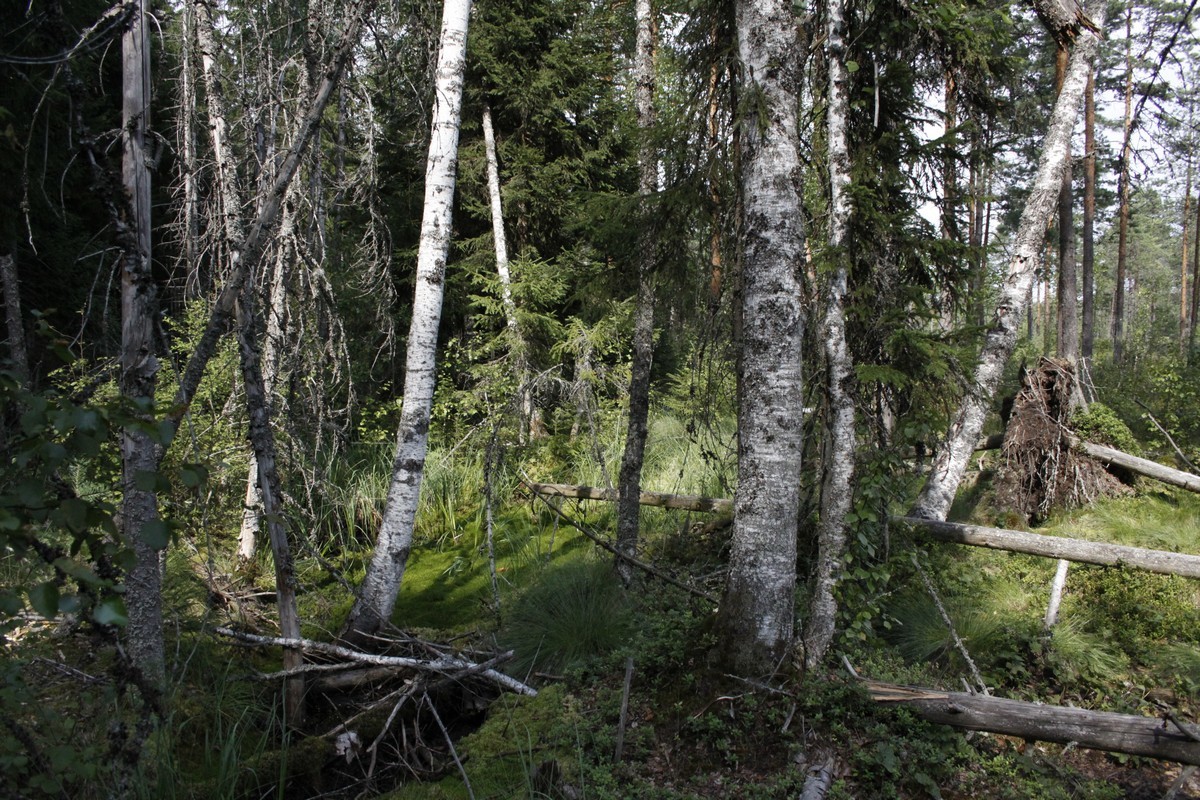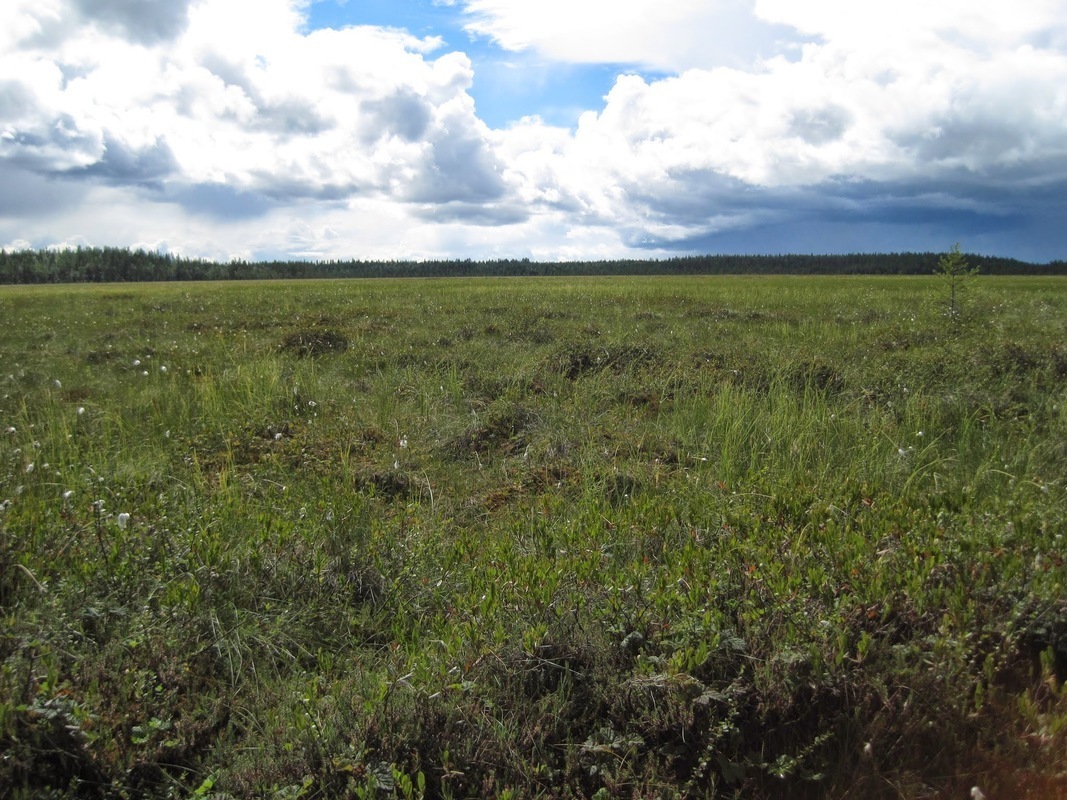14.4 Bogs
Bogs are an important part of Finnish nature. Almost one third of Finland's surface area consists of bog or some other type of marshland. The top soil of a bog consists of peat, which is a type of poorly decomposed plant waste.
Trees can grow in some bogs. Pine swamp is the most common Finnish bog type. Like their name suggests, pine swamps are distinguished by the pine trees that grow sparsely in this bog type. Other plants common to pine swamps include birch, and heather.

Pine swamp. The soil type of a bog consists of peat. It is formed of decomposed moss. Peat moss is common to all bog types. Pine swamps contain pine trees. They suffer from the low nutrient concentration of the bog. Bogs accomodate relatively little animal life.
Another type of bog that includes trees is the spruce bog. It is a bog type rich in plant life. Spruce trees and some broad-leaf trees grow in spruce bogs.

Spruce bog. The soil of a spruce bog consists of peat. Trees can grow their roots through the thin peat layer into a nutrient-rich soil. Birch and spruce are the most common tree species in a spruce bog. The undergrowth of a spruce bog is rich. The most common plants are moss, dwarf shrubs (such as blueberry), cloudberry, and wood horsetail.
Open bogs are free of trees. The thick peat layer of the bog has accumulated during the course of millenia. It consists of decomposed peat moss. Water puddles can also be found in the middle of open bogs.

Open bogs accomodate no trees. The peat layer can be tens of metres deep. Grasses and mosses are common to open bogs. Many open bogs of Southern and Central Finland are thicker at the centre than at their edges.
Trees can grow in some bogs. Pine swamp is the most common Finnish bog type. Like their name suggests, pine swamps are distinguished by the pine trees that grow sparsely in this bog type. Other plants common to pine swamps include birch, and heather.

Pine swamp. The soil type of a bog consists of peat. It is formed of decomposed moss. Peat moss is common to all bog types. Pine swamps contain pine trees. They suffer from the low nutrient concentration of the bog. Bogs accomodate relatively little animal life.
Another type of bog that includes trees is the spruce bog. It is a bog type rich in plant life. Spruce trees and some broad-leaf trees grow in spruce bogs.

Spruce bog. The soil of a spruce bog consists of peat. Trees can grow their roots through the thin peat layer into a nutrient-rich soil. Birch and spruce are the most common tree species in a spruce bog. The undergrowth of a spruce bog is rich. The most common plants are moss, dwarf shrubs (such as blueberry), cloudberry, and wood horsetail.
Open bogs are free of trees. The thick peat layer of the bog has accumulated during the course of millenia. It consists of decomposed peat moss. Water puddles can also be found in the middle of open bogs.

Open bogs accomodate no trees. The peat layer can be tens of metres deep. Grasses and mosses are common to open bogs. Many open bogs of Southern and Central Finland are thicker at the centre than at their edges.